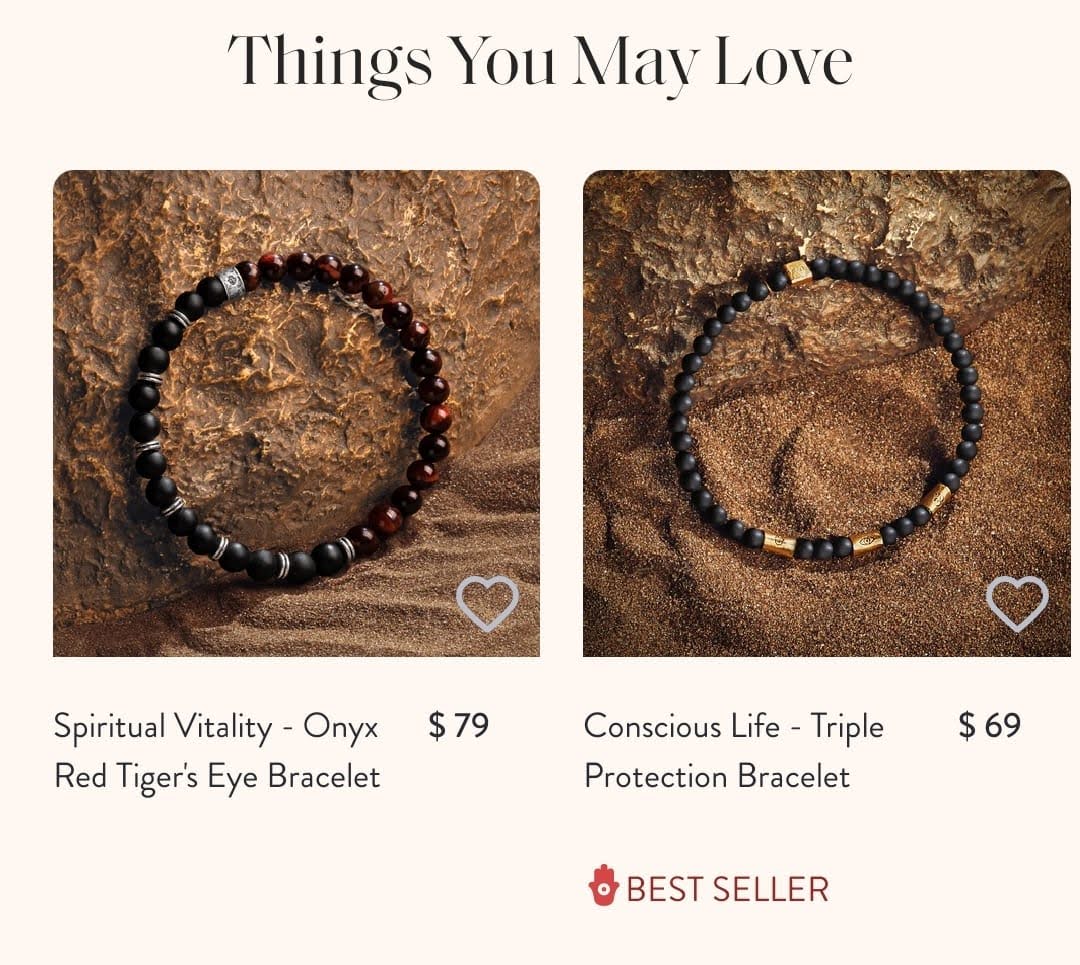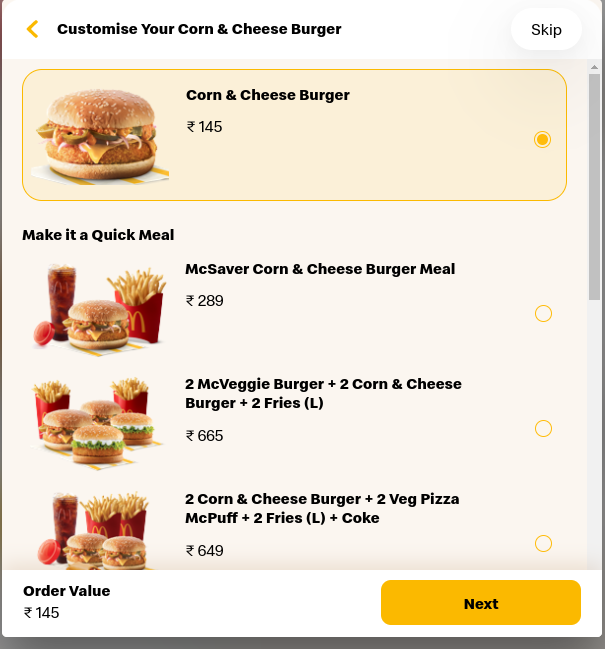
How to 10X UX with Personalised Product Recommendations
How to 10X UX with Personalised Product Recommendations
Apr 21, 2024Your website & app aren’t just stores; they’re storytellers. How you communicate and present your story changes your customer perception. But as attention spans decrease, with the median being 40 seconds, the time you get to tell your story diminishes. People want answers and products to be quick, easy, and perfectly fit their unique needs.
One innovation that has fixed this problem is Personalised Product Recommendations. According to Barilliance, Personalised product recommendations increased Average Order Value (AOV) by an average of 369%!
What are Personalized Product Recommendations?
According to BigCommerce, Personalized product recommendations are defined as “when a site shows a selection of product recommendations that's unique to the individual visitor, based on their behaviors and profile.”
Personalized product recommendations use data like browsing history, purchase patterns, and user preferences to create tailored experiences. These tailored experiences appear uniquely personal to each individual, making them feel valued.
Why are Personalized Product Recommendations important?
A study by Salesforce found that personalized product recommendations can increase sales by 4.6 times across all devices! (Source: Study: Personalized Recommendations Produce 4 Times More Conversions - Practical Ecommerce)
This boost happens because personalized recommendations match products with each customer's interests. This makes shopping easy and enjoyable for customers. It helps customers find what they need quickly, leading to better shopping experiences and more purchases.
Effective personalization also shortens the customer journey. This enhances their experience and builds a positive relationship. In simpler terms, when customers see products they like, they buy more and return often.
By consistently meeting & exceeding customer needs, your store becomes a preferred shopping destination. This fosters a loyal community and ensures sustained business success.
Best Practices:
Know Your Audience
Get personal.
Product recommendations are not a surface-level analysis of customers.
It’s about understanding why customers act in a certain manner. It's about getting answers to fundamental questions like;
Who are your customers?
What are their pain points?
What are their Fears, Uncertainty, and Doubt?
What drives their purchases?
For instance, if you're selling outdoor gear, know whether your customers are weekend campers or hardcore mountaineers.
Segment
Each customer is unique. But they also have common habits, ideas, and desires.
Break down your customer base into segments. For example age, preferences, browsing habits, and purchase history.
These segments can then be leveraged to create customer personas. These personas can then be used to better visualize the needs and wants of different customers.
Tailor your recommendations to fit each segment.
Testing
What worked yesterday might not work tomorrow. Keep pace by constantly testing your strategies.
Try different approaches—maybe this week it’s color-based recommendations, next week it’s based on browsing history.
A/B Testing: This is when we compare two versions of a page to see which one performs better. The most common and popular test. Useful for comparing specific and minute improvements.
Multivariate Testing: Tests many variables at once to see what combination works best. This helps determine how different elements of your recommendation system affect user behavior.
Split URL Testing: Here, we compare different web pages to find out which one people like more. It’s useful for comparing different recommendation layouts or flows.
Heatmap Analysis: This shows where most people click and look on your site.
Clickstream Analysis: Examine the sequence of clicks made by users on your website.
Cohort Analysis: This tracks how certain groups of users behave over time.
User Testing: We ask real people to use the system and tell us what they think. This can provide insights beyond what quantitative tests offer.
Test different algorithms, placement, and ways of presenting recommendations.
Everything.
Product recommendations can be infinitely optimized and improved.
Types of Product Recommendations
Not all recommendations are the same. Matching the right type to the right customer at the right time is crucial.
Here’s a list of the most common Personalised Product Recommendations.
Cross-Selling
Cross-selling promotes products that complement the main purchase.
For example, Karma and Luck is known for its meaningful jewelry and mindful home decor. They smartly suggest items that align with customers' interests. If someone looks at a $79 Spiritual Vitality Onyx Red Tiger's Eye Bracelet, Karma and Luck may recommend the $69 Conscious Life Triple Protection Bracelet, a best seller, as a related product.

Upselling: Elevating Choices
Upselling presents an upgraded or premium version of the product. Upselling seeks to provide customers with more value by highlighting a more expensive option.
The undisputed king of Upselling is McDonalds. They popularized the concept with the innovation of ‘Meals’.
By offering customers the ability to upgrade their burgers to a cost-effective meal, they were able to increase AOV & customer satisfaction simultaneously.

Popularity-Based
Showcasing best-sellers or trending products can guide customers to proven favorites. This recommendation is also preferable for risk-averse customers. Popular products have inherent social proof.
Popularity-based recommendations can also provide deep insights into the wants and needs of customers.
A simple example is Amazon’s book recommendations. Recommending books is uniquely difficult. A customer's tastes and preferences can be incredibly unique and diverse across a spectrum of genres.
Hence, Amazon often recommends books using popularity-based metrics.

Frequently Bought Together
Frequently Bought Together highlights products often purchased in tandem. Popularised by Amazon, these recommendations are fantastic for improving AOV and potential bundling options.

Data-Driven Personalized Recommendations
This is what is commonly thought of as personalized product recommendations. Using mass customer data to generate unique customer insights and recommendations. Data-driven recommendations have the most accurate recommendations and the most extensive customer personas.
Optimizing Product Recommendations
Getting recommendations right is an ongoing process of refinement and adjustment. Here are the four most effective ways to optimize Personalized Product Recommendations.
Optimize Placement
Category Page: Don’t just list products; guide visitors. Strategically placing recommendations here can lead to deeper engagement.
Product Page: This is the most common and effective space for showing recommendations.
Shopping Cart: The last stop before purchase is a perfect spot for those “almost forgot” items & bundles.
Optimize Value to Noise
It’s a fine line between being helpful and overwhelming. Your recommendations should feel like a nudge, not a push. Suggestions should be relevant and valuable without cluttering the customer’s journey.
Optimize Using Existing Data
Many companies begin recommendations before collecting and organizing their existing data. Browsing history, past purchases, and customer preferences are a treasure trove of information.
Collect and build the foundation for Personalised Product Recommendations before diving into optimization.
Creating Tailored Content: Beyond Products
Recommendations aren’t just for products. Tailored content like blog posts, tutorials, or guides can increase customer engagement and move customers further down the funnel.
Common Product Recommendations Problems
Lack of Data
As mentioned previously in ‘Optimize Using Existing Data‘, one of the most common mistakes is launching Product Recommendations without sufficient data.
Collect more data points from the get-go. Encourage & incentivize user interactions that provide insights, such as ratings, preferences, and browsing behavior.
Product Categorization Issues
Poorly categorized products can lead to confusing recommendations. Regularly audit your inventory to ensure products are correctly categorized, facilitating more accurate suggestions and making it easier for customers to find what they need.
Bias in Recommendations
Bias can creep into algorithms unnoticed, skewing recommendations. Periodically review your recommendation engine. See where algorithms may make mistakes or faulty assumptions.
Data Analytics Challenges
Computer Science has a popular saying - “Garbage In, Garbage Out”.
Letting in too much data can weaken recommendations. Implementing robust analytics tools and practices helps sift through the noise, extracting actionable insights.
Segmentation Issues
Effective segmentation is key to personalization. However, mistakes in segmentation, whether due to bias or bad data can create false insights and misunderstandings.
Conclusion
Personalized Product Recommendations are a storytelling superpower. From boosting AOV & conversions to fostering customer loyalty, personalized recommendations are key.
We've dissected the what, why, best practices, and common mistakes of product recommendations.
Personalize wisely, and you'll see the difference in your cart sizes and customer smiles.
Check out AppBrew to get the ball rolling. Boost conversions and enhance customer loyalty with a customized mobile app experience.
Unlock Your Store's Full Potential – Discover How with a Free Demo
Get in touch© 2023 Appbrew. All rights reserved.
Privacy Policy